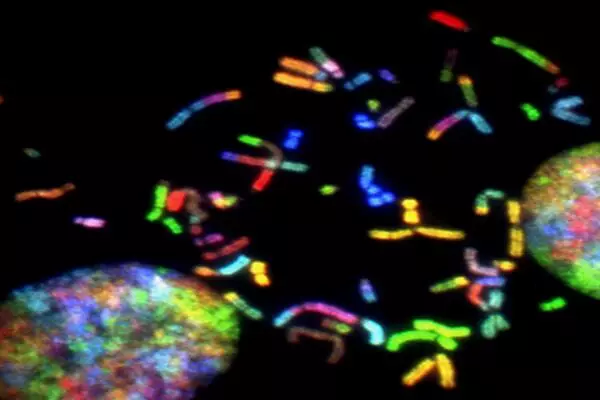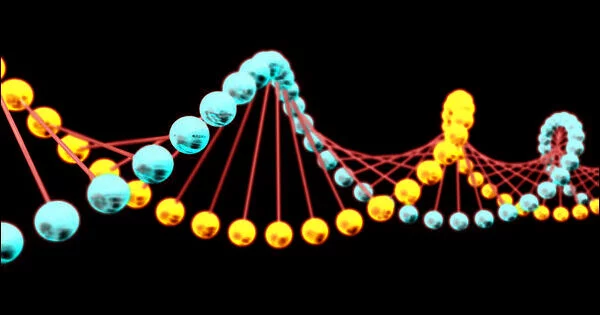A new study looks at mathematical models that are used to infer how evolution works at the population level of organisms. The study concludes that such models must be built with extreme caution, avoiding unwarranted initial assumptions, weighing the quality of existing knowledge, and remaining open to alternative explanations.
Claudius Ptolemy, an Alexandrian astronomer, and mathematician in the second century, had lofty goals. In order to make sense of the motion of stars and the paths of planets, he wrote the Almagest, a magisterial treatise on the subject. Ptolemy devised a complex mathematical model of the universe that appeared to replicate the movements of the celestial objects he observed.
Unfortunately, a fatal flaw lay at the heart of his cosmic scheme. Following the prejudices of his day, Ptolemy worked from the premise that the Earth was the center of the universe. The Ptolemaic universe, which was composed of complex “epicycles” to account for planet and star movements, has long been consigned to history, though its conclusions remained scientific dogma for over 1200 years.
The field of evolutionary biology is no less susceptible to misguided theoretical approaches, sometimes producing impressive models that fail to convey the true workings of nature as it shapes the dizzying array of living forms on Earth.
A new study looks at mathematical models designed to draw conclusions about how evolution works at the population level of organisms. The study concludes that such models must be built with extreme caution, avoiding unfounded initial assumptions, weighing the quality of existing knowledge, and remaining open to alternative explanations.
One of our key messages is the importance of considering the contributions of evolutionary processes certain to be in constant operation (such as purifying selection and genetic drift), before simply relying on hypothesized or rare evolutionary processes as the primary drivers of observed population variation (such as positive selection).
Jeffrey Jensen
Failure to follow strict procedures when developing null models can result in theories that appear to square with certain aspects of available data derived from DNA sequencing, but fail to correctly elucidate underlying evolutionary processes, which are frequently highly complex and multifaceted.
Such theoretical frameworks may offer compelling but ultimately flawed pictures of how evolution actually acts on populations over time, be these populations of bacteria, shoals of fish, or human societies and their various migrations during prehistory.
In the new study, Jeffrey Jensen, a researcher at Arizona State University’s Biodesign Center for Mechanisms of Evolution and a professor in the School of Life Sciences with the Center for Evolution & Medicine, leads a group of international experts in the field in providing guidance for future research. They describe a set of criteria that can be used to improve the accuracy of models that generate statistical inferences in population genomics, a scientific discipline concerned with large-scale comparisons of DNA sequences within and across populations and species.
“One of our key messages is the importance of considering the contributions of evolutionary processes certain to be in constant operation (such as purifying selection and genetic drift), before simply relying on hypothesized or rare evolutionary processes as the primary drivers of observed population variation (such as positive selection),” Jensen emphasized.
The research findings appear in the current issue of the journal PLOS BIOLOGY.
A field comes of age
Population genomics arose as early efforts in the field attempted to reconcile Charles Darwin’s notion of evolution by natural selection with the first inklings of inheritance mechanisms discovered by the Augustinian monk, Gregor Mendel.
The synthesis reached a climax in the 1920s and early 1930s, owing largely to the mathematical work of Fisher, Haldane, and Wright, who were the first to investigate how natural selection, in conjunction with other evolutionary forces, would change the genetic composition of Mendelian populations over time.
To accomplish this, population geneticists develop mathematical models quantifying the contributions of these evolutionary processes in shaping gene frequencies, use this theory to design statistical inference approaches for estimating the forces producing observed patterns of genetic variation in actual populations, and test their conclusions against accumulated data.

The spice of life
The study of genomic variation focuses on differences in DNA sequences between individuals and populations. Some of these variants are critical for biological function, such as mutations that cause genetic disease, whereas others have no detectable biological effects.
Variation in the human genome can manifest itself in a variety of ways. Single nucleotide polymorphisms, or SNPs, are a common source of variation in which a single DNA letter in the genome is altered. However, larger-scale genome variation involving the simultaneous alteration of hundreds or even thousands of base pairs is also possible. Again, some of these changes may influence disease risk and survival, while many others have no effect.
When different variants segregating in a population have a fitness differential relative to one another, natural selection may occur. Population geneticists seek to understand the contributing evolutionary processes in a rigorous, quantitative manner by designing and studying mathematical models governing the corresponding gene frequency change and applying those models to empirical data. As a result, population genetics is frequently regarded as the theoretical foundation of modern Darwinian evolution.
Adrift through the genome
Although natural selection is undeniably important in the evolutionary process, the role of positive selection in increasing the frequency of beneficial variants – the potential driver of adaptation – is certain to be comparatively rare in comparison to other forms of natural selection. Purifying selection, for example, is a constantly acting and far more pervasive form of selection that involves the removal of deleterious variants from the population.
Furthermore, there are numerous non-selective evolutionary processes that are extremely important. For example, genetic drift describes the numerous stochastic fluctuations that occur during evolution. Natural selection may be more effective in purging deleterious variation and potentially fixing beneficial variation in large populations, whereas genetic drift will become more dominant as populations become smaller.
When comparing prokaryotic organisms like bacteria to organisms composed of eukaryotic cells, such as humans, the distinction is stark. In the former case, large population sizes lead to the more efficient selection. A weaker selection pressure operating in eukaryotes, on the other hand, is more tolerant of genomic changes as long as they are not highly deleterious.
According to the Neutral Theory of Molecular Evolution, a now-guiding principle of evolutionary theory proposed over 50 years ago by population geneticist Motoo Kimura, most evolutionary changes at the molecular level in real populations are governed by genetic drift rather than natural selection. The study emphasizes that evolutionary biologists frequently overlook this critical point. According to co-author Michael Lynch, director of ASU’s Biodesign Center for Mechanisms in Evolution, “natural selection is just one of several evolutionary mechanisms, and failure to recognize this is probably the most significant impediment to a fruitful integration of evolutionary theory with molecular, cellular, and developmental biology.”
The new consensus study further stresses that a failure to consider these alternative evolutionary mechanisms which are certain to be operating, including genetic drift, and incorporate these into models of population genomics, is likely to lead researchers astray. The common over-reliance on purely adaptive models to explain genomic variation has led to a raft of interpretations of dubious value, the authors assert.
The study includes a detailed flow chart that can be used to guide the development of more accurate models for drawing evolutionary inferences from genomic data. Biological parameters that differ between species include not only evolutionary variables such as population size, mutation rates, recombination rates, and population structure and history, but also the structure of the genome itself and life-history traits such as mating behavior. All of these factors are important in determining observed molecular variation and evolution.





